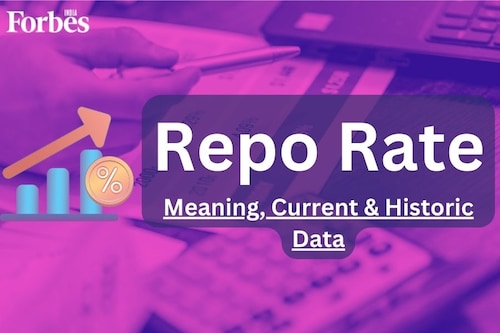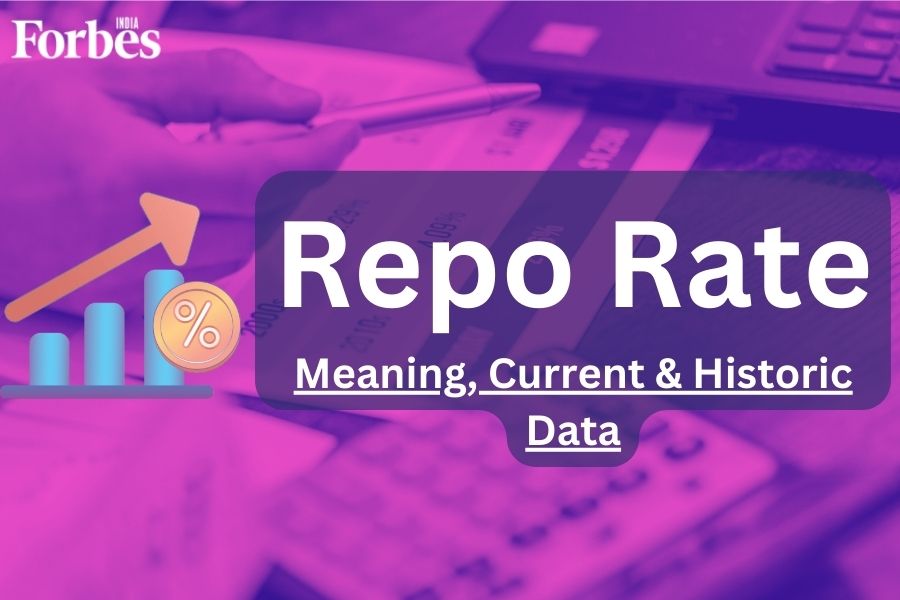What is repo rate, current repo rate, and history of RBI repo rates in India (20
Stay ahead of the curve with our in-depth analysis of repo rate decisions and their implications for India's economic landscape



When it comes to handling a country"s economy and financial markets, one crucial tool may be found in monetary policy. The repo rate—short for "repurchase rate"—is the name given to this instrument. The repo rate is a benchmark interest rate used by the Reserve Bank of India (RBI) to facilitate the smooth operation of the monetary system.
The word "repo rate" appears frequently in banking and monetary policy conversations. It refers to the interest commercial banks pay to RBI for overnight loans secured by those securities.
The repo rate is essential for the RBI to manage money in the economy. By adjusting the repo rate, the RBI can influence how much it costs for banks to borrow money, affecting the interest rates for loans and savings. Several aspects of the economy are sensitive to changes in the repo rate, including inflation, currency exchange rates, and overall economic growth.
The repo rate is determined by the RBI’s willingness to buy or sell government assets to deposit or withdraw funds from the banking sector. When the RBI wants to make more money available, it lowers the repo rate. This lowers the cost of borrowing money from the RBI for financial institutions. The repo rate is increased by the RBI to discourage banks from borrowing money and thereby lower the money supply.
In this post, we"ll talk about what the repo rate means, how repo transactions work, and how RBI uses the repo rate to manage monetary policy.
Repo Rate in its full form, or "REPO," stands for "Repurchasing Option" Rate. It"s also known as the "Repurchasing Agreement."
The Repo Rate, set by the Reserve Bank of India (RBI), is the rate at which commercial banks borrow funds from the RBI against the collateral of securities. It is a crucial tool used by the RBI to manage liquidity and control inflation in the economy. By increasing or decreasing the Repo Rate, the RBI influences interest rates and regulates the money supply in the banking system.
When people are short on money, they borrow from banks and pay interest on the loans. Similarly, commercial banks and financial institutions can also be short of money. When RBI lends money to commercial banks, it charges those banks interest on the principal amount of the loan.
Repo Rate is the return on investment that banks get when they borrow money against any kind of collateral. Commercial banks sell eligible securities to the RBI, like treasury bills, gold, and bond papers. Banks can buy the securities from the RBI when the loan is paid back. So, it"s known as the "Repurchasing Option." If they take out a loan without putting the securities up as collateral, it is at the Bank Rate.
On June 6, 2025, the Reserve Bank of India"s (RBI) Monetary Policy Committee (MPC) decided to cut the key policy repo rate to 5.50 percent. The 50 basis point deduction is the second rate cut since May 2020. The RBI, under the leadership of new governor Sanjay Malhotra, kept the GDP growth forecast for FY26 at 6.5 percent, with a Q2 projection of 6.7 percent. The regulator also projected the inflation forecast for FY26 at 3.7 percent, with Q2 estimates of 3.4 percent.
"On both inflation and growth fronts, the Indian economy is progressing well and broadly on expected lines. Strong macroeconomic fundamentals and benign inflation outlook provide space to monetary policy to support growth, while remaining consistent with the goal of price stability. As global environment remains uncertain, it has become even more important to focus on domestic growth amidst sustained price stability. Accordingly, today’s monetary policy actions should be seen as a step towards propelling growth to a higher aspirational trajectory," RBI governor Sanjay Malhotra said at the press conference.
First Published: Jun 18, 2025, 16:38
Subscribe Now